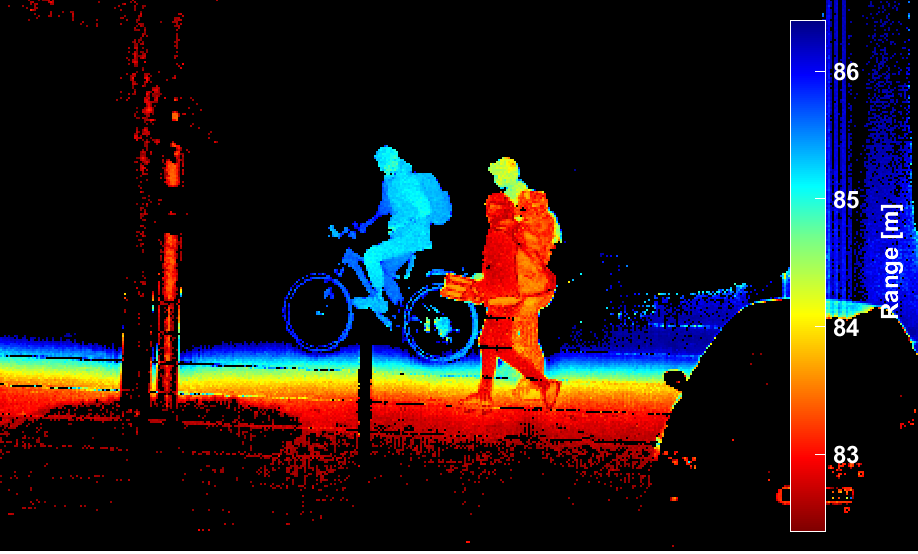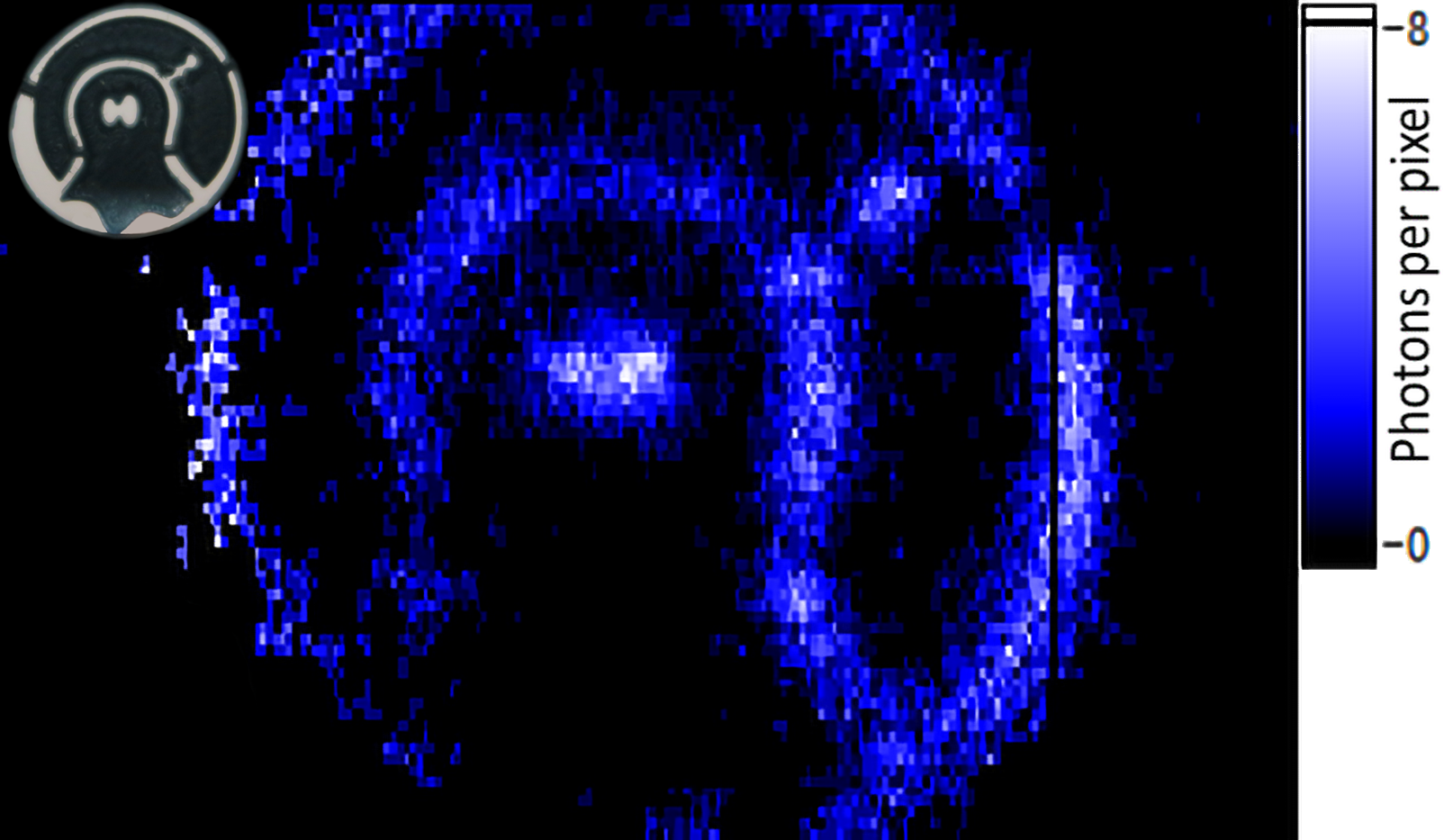


Problem definition
Military reconnaissance in adverse atmospheric conditions requires imaging techniques capable of providing high-resolution images through scattering and turbulent media. Active imaging is the method of choice for critical applications where high precision and reliability are required. Complete control over the illuminating light source makes it possible to obtain a high level of information about the characteristics of distant targets, especially detailed 3D range information, as shown in Figure 1. In addition, pulsed active imaging systems can control the timing of detection, suppressing noise and improving visibility through fog, smoke, and fire.
Project goal
As part of a project commissioned by the German government, we at Fraunhofer IOSB are working to increase the performance of existing systems and to develop and benchmark modern systems for active imaging.
Solution approaches
Gated Viewing (GV) provides the perfect combination of 3D detection of non-cooperative targets in adverse conditions and detection speed. It uses a pulsed laser synchronized with a camera to illuminate distant objects of interest. A suitable timing gate selects only the photons reflected from the object and suppresses the photons originating from its foreground and background. This gives a much higher target/background contrast than an image without a gate. In addition, backscattered photons from particles in the atmosphere between the sensor and the object are not detected, which provides significant advantages in poor visibility conditions.
The systems typically operate in the shortwave infrared, retina-safe wavelength range with favorable properties for atmospheric propagation. Pulse energies range from tens of microjoules in scanning mode to tens of millijoules in flash mode. Since both non-detectability and extended spectral coverage are of paramount importance for operational use, we are investigating novel approaches to active imaging such as compressive sensing and quantum imaging.
With Compressive Sensing, it is possible to detect distant objects with fewer detections compared to established systems for active imaging, since the spatial distribution of the illumination pattern can be controlled for each image. This method requires only a single element detector for detection, since the spatial information of the illuminated object can be reconstructed from the reflection of these patterns.
Quantum imaging has the potential to obtain images with a minimal number of single photons (Figure 2), and these systems can remain below the detection limit for external observers. The broadband quantum light source emits photons randomly in space and time, and ideally can mimic background noise. Only the transmitter has the key to separate the real background noise from the real signal using additional information from entangled photon partners. Moreover, quantum systems are inherently hardened against hostile jamming attacks.
 Fraunhofer Institute of Optronics, System Technologies and Image Exploitation IOSB
Fraunhofer Institute of Optronics, System Technologies and Image Exploitation IOSB